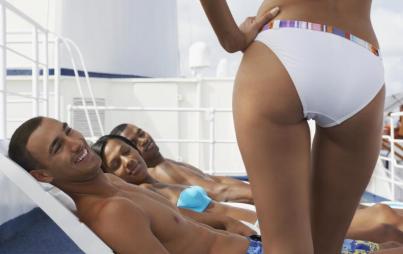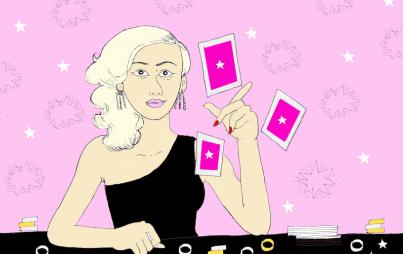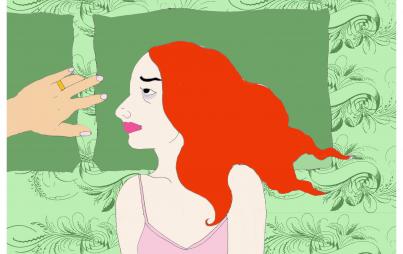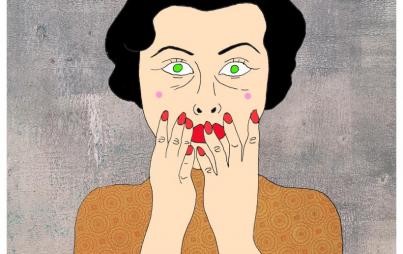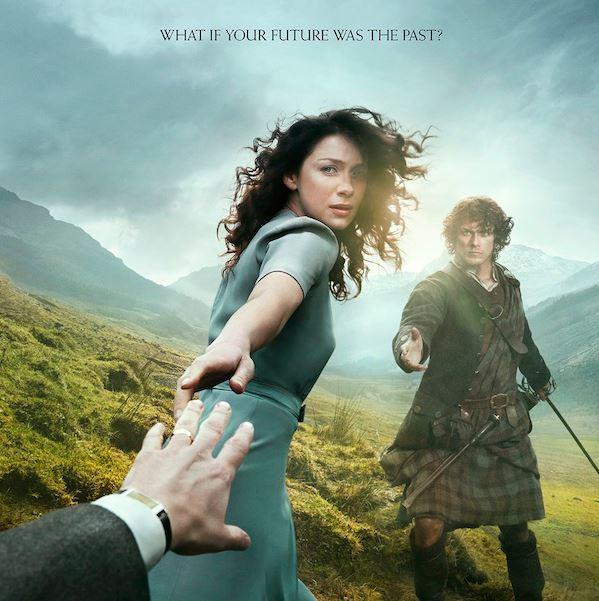
Outlander is a fantasy about cheating on your husband. And it's not especially subtle, either.
Both Diana Gabaldon's 1991 novel and the recent Starz Television series—slated to return next April—tell the story of Claire Randall, a nurse who has just been reunited with her husband Frank, an Oxford history professor, following the end of World War II. They go on a delayed honeymoon to Scotland, and Claire falls backwards through time to the 1700s. There she meets the swashbuckling, kilt-wearing, not-an-Oxford-history-professor-thank-you-very-much hero Jamie (played on television by the radioactively delectable Sam Heughan).
Exiled from her own time, events conspire (oh, those darn events) to thrust Jamie and Claire into matrimony and then into the inevitable subsequent matrimonial acts.

"Thus inescapably pinioned," Claire laments in the novel, "I squelched up the path to my wedding." Further squelching will ensue.
As Claire's words indicate, the guilt of infidelity is discussed explicitly and directly. But it's also more indirectly, and even bizarrely, symbolized. The first person Claire meets when she falls back into the past is Frank's ancestor, Captain Jonathan "Black Jack" Randall. Randall looks exactly like Frank (and in the television series is played by the same actor, Tobias Menzies).
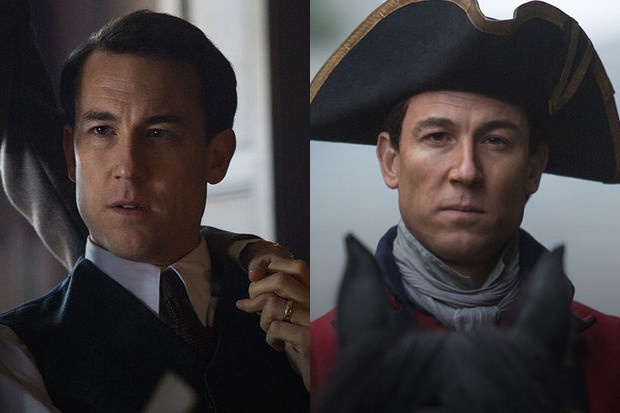
But where Frank is a studious, thoughtful, kindly scholar, Jack Randall is a vicious blackguard; he abuses Claire and (in the television version at least) tries to rape her almost as soon as he sees her. Moreover, Jack is presented as impotent and sexually deviant; he tries to rape Jamie's sister in the novel but is unable to do so because, it is suggested, women don't interest him. He is instead aroused by homosexual sadism—Jamie is the main object of his lust, not Claire.
If the novel presents infidelity as a guilty pleasure, then it also takes some pains to circuitously justify it. Claire's husband, Frank, looks exactly like his ancestor Jack—a brutal, vicious man physically unable to satisfy Claire. The novel, through its doubling, seems to suggest that good Frank may also be evil Jack; the book both regrets the loss of Frank and celebrates the escape from him.
In doing so, Outlander seems deliberately to be about itself—which is to say, it is about the act of escaping that dowdy, evil husband, and finding a better partner through the magical, time-traveling power of a historical romance. The television show, for its part, offers the same pleasure, with a twist. The series returns, periodically, to check in on Frank and his desperate search for his wife. Where the novel allows the reader to enter the fantasy once and for all, the television show mirrors its own episodic form, so the viewer leaves Frank for greener kilts, then goes back to him, then leaves him: infidelity on the weekly installment plan.
The Glorious Guilty Pleasure Of Romantic Fiction
Outlander suggests that reading (or watching) romance is a guilty, pleasurable escape from an unfulfilling marriage. In this way, it echoes Janice Radway's famous 1984 book Reading the Romance. In her anthropological study of romance readers, Radway argued that women found in romance the kind of caring, intimate, mothering relationships that their husbands failed to provide. Romances, Radway argued, were compensatory; they were appealing because they imagined nurturing, maternal, masculine, exciting, loving men of the sort who were not readily available to women under patriarchy.
But if Outlander seems in some ways to confirm Radway's view of romance, it also undermines it. Claire is, after all, not exactly the reader—the book isn't about a modern day woman falling into the past, but about a woman in the past falling further into the past. It's historical fiction within historical fiction; a fantasy in a fantasy. Claire's husband, Frank, is the kind of nurturing man that Radway seems to tout as ideal—but the novel rejects that fantasy and instead chooses Jaime, who is a good bit more brutal (there is an infamous spanking scene, which the television show has not yet reached).
The patriarchal mores of Scotland are part of its charm; Claire gets to both defy them and submit to them, in a kind of stimulating cultural (and with the spanking, actual) BDSM. The novel, then, is not so much about providing a fantasy alternative to reality, than it is about luxuriating in multiple possible fantasies. Outlander's readers may want to escape from reality, but that escape seems less about compensating for the dreary bonds of patriarchy and more about compensating for the dreary truth that everybody, male or female, only gets one life—except in fiction, where you can imagine more times, more places . . . and more polyamory.
Outlander also raises some interesting questions about identification. Critics generally assume that female readers of romance will identify with the female heroine. No doubt that's true to some extent—but in Outlander, it's also true that Claire's illicit desire for Jamie is mirrored by Jack Randall's illicit desire for Jamie. The romance novel enacts, in its sadistic sexual finale, its own Jack/Jamie slash fan-fiction. The reader gets to imagine infidelity, but she (or he) also gets to imagine herself (or himself) as a sexual predator, the unfettered patriarch inflicting sexual violence on a desirable male body. Of course, Jack is a villain, and his passions are seen as wrong—but then, Claire's betrayal of her marriage vows is also seen as wrong and a source of guilt. Illicit passions aren't less enjoyable because they're illicit. Quite the contrary.
Romance is often presented—by Radway and others—as limiting or staid; as an escape into a familiar, cozy, infantile fantasy. For Gabaldon, though (and I think for many other romance writers and readers) romance is adventure, possibility, excitement. The Outlander of the title is not just Claire, but the reader (or viewer), who is estranged from her everyday routine not so she can be comforted, but so she (or for that matter he) can try on different genders, different loves, different lives.
Images: Wikimedia Commons



